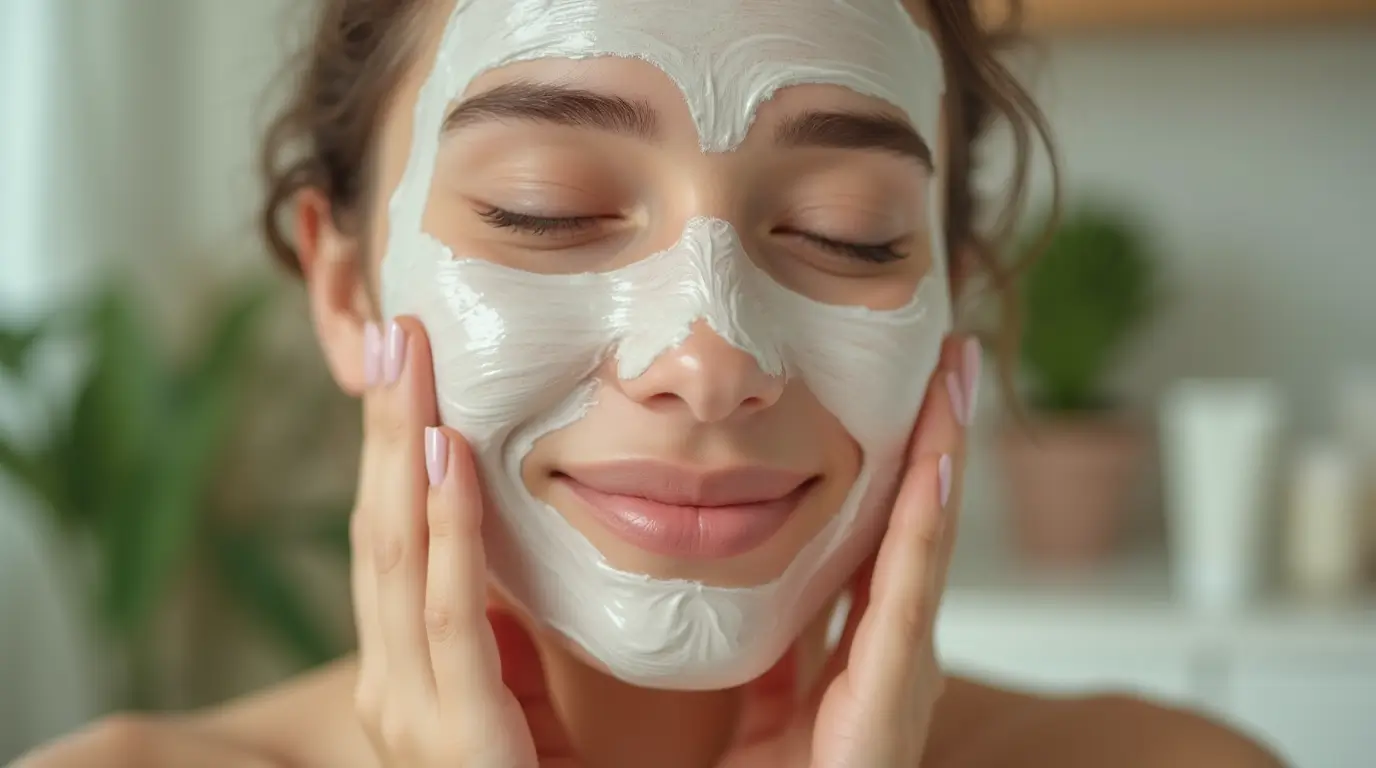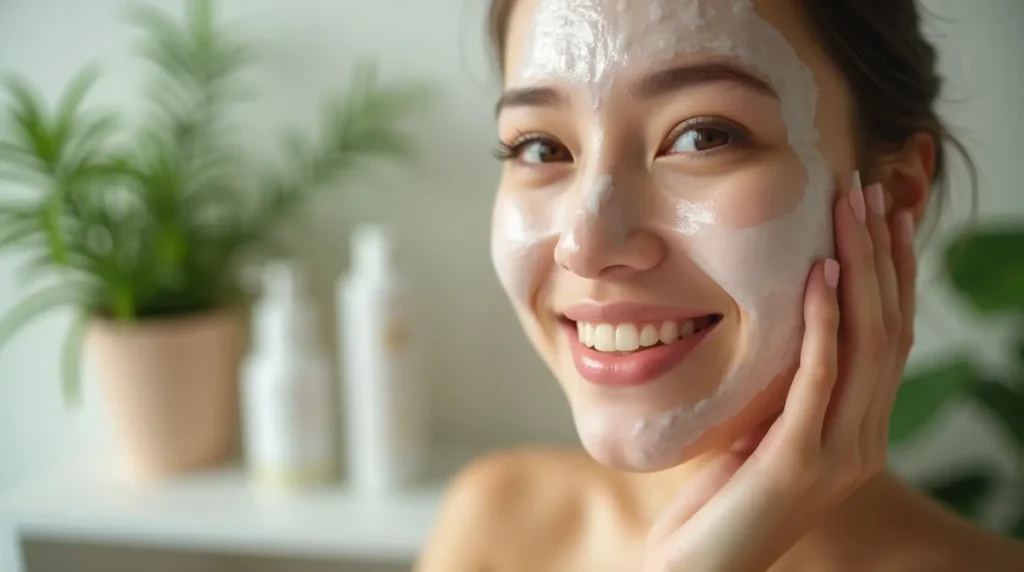Peel Off Face Mask That Actually Work (and Feel Amazing)
Looking for peel off face mask that truly deliver? Discover the best masks that cleanse, refresh, and leave your skin glowing — all while feeling

Table of Contents
Ever tried a peel-off mask that promised miracles — only to leave your skin dry or irritated? We’ve all been there, eagerly anticipating that satisfying peel and glowing results, only to experience disappointment (and sometimes pain).
If you’re on the quest for clear, radiant, and healthy skin, the sheer number of peel-off mask options can be overwhelming. The good news? Not all peel-off masks are created equal, and the right ones can actually deliver impressive results without compromising your skin’s health.
In this guide, you’ll discover peel-off face masks that truly work, how to use them properly for maximum benefits, and expert tips to avoid common pitfalls. Let’s transform your masking experience from frustrating to fantastic!
What are Peel Off Face Masks?
Peel off face masks are specialized skincare treatments that start as a gel or cream consistency and gradually dry to form a cohesive film. Once completely dry, they can be peeled away from the skin in (ideally) one satisfying piece, taking surface impurities along with them.
These masks work by adhering to the outermost layer of skin—binding to excess oils, dead skin cells, and surface debris as they dry. When peeled off, they physically remove these impurities, instantly revealing fresher skin underneath.
The concept behind peel-off masks isn’t entirely new. In fact, many ancient beauty rituals involved applying natural substances like honey or egg whites that would dry and be removed, taking impurities with them. Today’s formulations have evolved significantly, incorporating targeted ingredients for specific skin concerns while maintaining that satisfying peel-off experience.
Why Peel Off Face Masks Matter in Skincare
Immediate Visual Impact
Unlike some skincare products that require weeks to show results, peel-off masks offer instant gratification. After a single use, many people notice smoother skin texture, a subtle glow, and temporarily tightened pores. This immediate payoff makes them perfect for pre-event skin prep or whenever your complexion needs a quick refresh.
Emotional Boost
Let’s be honest—there’s something incredibly satisfying about peeling off a mask and seeing all the impurities it’s lifted away. This tactile experience creates a powerful psychological effect, reinforcing the feeling that you’ve just done something beneficial for your skin. The ritual itself becomes a form of self-care that combines physical and emotional benefits.

Professional Insight
“Peel-off masks have earned their place in a balanced skincare routine,” says Dr. Maya Chen, board-certified dermatologist. “When formulated properly and used appropriately, they offer gentle physical exfoliation that complements chemical exfoliants like AHAs and BHAs.”
Esthetician Tara Williams adds, “I recommend peel-off masks to clients who want that deep clean feeling without the harshness of some clay masks. The key is choosing formulations with hydrating ingredients to balance the astringent qualities.”
How to Use Peel Off Face Masks Like a Pro
Step 1 — Choose the Right Mask for Your Skin Type
Selecting a mask that addresses your specific skin concerns is crucial for success:
Oily or Acne-Prone Skin: Look for masks containing activated charcoal, kaolin clay, or tea tree oil. These ingredients help absorb excess sebum and draw out impurities from congested pores.
Dry or Dehydrated Skin: Opt for masks with hyaluronic acid, glycerin, or aloe vera to provide hydration while gently exfoliating.
Sensitive Skin: Choose fragrance-free formulations with calming ingredients like cucumber extract, chamomile, or centella asiatica. Avoid masks with high alcohol content or intense astringents.
Combination Skin: Consider multi-masking (applying different formulas to different facial zones) or select balanced formulations with both purifying and hydrating properties.
Step 2 — Prep Your Skin
Proper preparation ensures the mask adheres evenly and works effectively:
- Cleanse your face thoroughly to remove makeup, sunscreen, and surface oils.
- Consider gentle exfoliation before application to remove dead skin cells (but skip this if you have sensitive skin or active breakouts).
- For enhanced results, try steaming your face for 5 minutes to open pores. Hold your face over a bowl of hot water with a towel draped over your head, or take a warm shower before application.

Step 3 — Apply Evenly
Technique matters for both effectiveness and the satisfaction of removal:
- Use a clean, flat synthetic brush (similar to a foundation brush) for the most even application.
- Apply a medium-thick layer—thin enough to dry completely but thick enough to peel off in one piece.
- Create slightly thicker edges, which makes the initial peel easier to grip.
- Carefully avoid eyebrows, hairline, and the delicate skin around eyes and lips to prevent painful removal.
Step 4 — Let it Dry Completely
Patience during this step is essential for optimal results:
- Follow the specific timing recommendations on your product (typically 15-30 minutes).
- You’ll know it’s ready when the entire mask feels dry to the touch and doesn’t feel tacky anywhere.
- Avoid facial movements during drying to prevent cracking and uneven peeling.
- If the mask isn’t completely dry, give it additional time—removing it too soon will reduce effectiveness and create a messy experience.
Step 5 — Peel Gently
The removal technique affects both your skin and the satisfaction factor:
- Begin at the outer edges, usually along the jaw or forehead.
- Hold skin taut with one hand while gently pulling the mask upward with the other.
- Peel slowly and deliberately—never rip or pull aggressively.
- If a section resists removal, wet your fingertip with warm water and gently loosen that area.
Step 6 — Post-Peel Care
What you do after removing the mask significantly impacts results:
- Rinse your face with cool water to remove any residue.
- Apply a hydrating, soothing toner to rebalance skin pH.
- Follow with a moisturizer appropriate for your skin type to lock in benefits and replenish any moisture lost during the treatment.
- Consider applying a hyaluronic acid serum before moisturizing for extra hydration.
Common Mistakes to Avoid with Peel Off Face Masks
Applying too thick or too thin: An inconsistent layer leads to uneven peeling and results. Too thick, and the mask won’t dry properly; too thin, and it may be difficult to remove in one piece.
Peeling too early: Removing the mask before it’s completely dry can irritate skin and diminish benefits. Wait until the entire mask feels solid and non-tacky.
Using on broken or sunburned skin: Peel-off masks should only be applied to intact, healthy skin. Using them on damaged skin can cause further irritation or even scarring.
Overuse: Limit use to once or twice weekly at most. Excessive use can strip natural oils and compromise your skin barrier, leading to sensitivity, dryness, or increased oil production.
Ignoring skin reactions: If you experience burning, intense tingling, or redness during application, remove the mask immediately—your skin is telling you something’s wrong.
Pro Tips & Skincare Expert Secrets for Peel Off Face Masks
Patch Test First: Before applying to your entire face, test a small area behind your ear or on your inner arm, especially with new products.
Layer with Care: Apply the mask slightly thicker around the edges for easier initial peeling. The middle of the face can have a slightly thinner application.
Mix & Match: Try multi-masking by applying different formulations to different facial zones. For example, use a charcoal peel-off mask on your T-zone and a hydrating peel-off variant on your cheeks.
Pre-Mask Prep: For deeper congestion, consider using a warm compress on problem areas before applying your mask to soften debris in pores.
Timing Matters: Use clarifying peel-off masks when your skin is at its oiliest (often mid-day or early evening) for maximum oil absorption.
Stay Consistent: For visible improvement in skin texture and clarity, use appropriate peel-off masks regularly (weekly or bi-weekly) rather than as a one-time treatment before special events.

Top Peel Off Face Masks That Actually Work
| Product Name | Key Ingredients | Best For | Average Price |
|---|---|---|---|
| Boscia Luminizing Black Mask | Activated charcoal, vitamin C | Oily and congested skin | $34 |
| Freeman Cucumber Peel-Off Mask | Aloe and cucumber | Sensitive skin | $5 |
| GlamGlow GravityMud Firming Treatment | Marshmallow extract, licorice leaf | Anti-aging and firming | $59 |
| Pilaten Suction Black Mask | Charcoal, bamboo | Blackhead removal | $8 |
| Yes To Tomatoes Clear Skin Detoxifying Charcoal Peel-Off Mask | Tomato extract, charcoal | Acne-prone skin | $16 |
| I Dew Care Sugar Kitten Hydrating Holographic Peel-Off Mask | Ruby powder, pearl extract | Hydration and glow | $23 |
The Peeling Conclusion
Finding the right peel-off face mask can truly transform your skincare routine. Beyond the undeniable satisfaction of that perfect peel, these treatments offer tangible benefits—from instantly smoother texture to visibly refined pores. The key lies in selecting formulations suited to your specific skin concerns and using them properly.
Remember that even the best peel-off mask is just one component of a comprehensive skincare routine. Use them strategically as a supplement to your regular cleansing, toning, treating, and moisturizing regimen, not as a replacement.
Have you found a peel-off mask that delivers amazing results for your skin? Share your experiences and favorite products in the comments—your discovery might be exactly what someone else has been searching for!
Frequently Asked Questions
Can I use Peel Off Face Masks on sensitive skin?
Yes—but choose carefully. Look for formulas specifically designed for sensitive skin that exclude alcohol, synthetic fragrances, and harsh chemicals. Ingredients like aloe vera, cucumber extract, and chamomile can provide benefits without irritation. Always conduct a patch test first, and limit use to once every 1-2 weeks rather than weekly.
How often should I use a Peel Off Face Mask?
For most skin types, using a peel-off mask once or twice a week provides benefits without overstripping the skin. If you have sensitive or dry skin, once every 7-10 days is ideal. Those with very oily skin might tolerate twice-weekly applications, but watch for signs of irritation. Remember that more frequent application doesn’t necessarily mean better results—your skin needs recovery time between treatments.
What’s the best peel off mask for blackheads?
Charcoal-based masks are typically most effective for targeting blackheads. Products containing activated charcoal combined with clay (like kaolin or bentonite) provide powerful absorption of excess oil and debris. For enhanced results, look for formulations that also include salicylic acid, which helps dissolve the oil and dead skin cells that form blackheads. The Boscia Luminizing Black Mask and Pilaten Suction Black Mask are particularly effective for this concern.
Are Peel Off Face Masks good for acne-prone skin?
Some peel-off masks can help manage acne-prone skin by removing excess oil and unclogging pores. Look for non-comedogenic formulations containing ingredients like tea tree oil, salicylic acid, or niacinamide. However, never use peel-off masks on active, inflamed breakouts or open blemishes, as this can worsen inflammation and potentially cause scarring. For active acne, gentle clay masks often provide better results with less irritation.
What should I do if a Peel Off Mask irritates my skin?
If you experience irritation, first rinse your face thoroughly with cool water to remove all mask residue. Apply a gentle, fragrance-free moisturizer containing soothing ingredients like centella asiatica, aloe vera, or colloidal oatmeal. Avoid active skincare ingredients (retinoids, vitamin C, acids) for at least 48 hours. Use only the most gentle cleansers during this recovery period. If severe irritation persists beyond 24 hours, consult a dermatologist.

